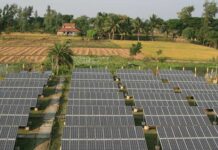In 2023, global low‑carbon hydrogen production capacity reached 1,830 ktpa. Low‑carbon hydrogen is generated with minimal or zero greenhouse gas (GHG) emissions, either by splitting water with renewable electricity through electrolysis, gasifying biomass feedstocks, or by capturing and storing CO₂ emissions when using conventional hydrogen‐making processes.
Although production volumes remained largely flat for several years, capacity began to climb in 2022—and this upward trajectory is expected to continue. To sustain rapid growth, the industry must scale up facilities (to drive down unit costs), replace existing high‑carbon hydrogen in current applications, and develop entirely new end‑uses for hydrogen.
Key Market Driver
Global Net‑Zero Targets
The worldwide push toward net‑zero carbon emissions by mid‑century is fueling demand for low‑carbon hydrogen. Governments are setting ambitious climate goals and turning to hydrogen to decarbonize sectors that are hard to electrify—heavy transport, steel and cement manufacturing, and chemical production. Policy frameworks such as the European Green Deal and the U.S. Infrastructure Investment and Jobs Act include generous incentives for hydrogen projects, spurring both public and private investment in production facilities, pipelines, and refueling stations. Economies of scale and R&D support are gradually driving down costs, making hydrogen an ever more attractive decarbonization tool.
Primary Market Restraint
High Production and Infrastructure Costs
Despite declining renewable‐energy prices, green hydrogen (via electrolysis) remains costlier than fossil‑derived hydrogen. Likewise, blue hydrogen—which combines conventional hydrogen production with carbon capture, utilization, and storage (CCUS)—has yet to prove commercially viable at scale. On top of production expenses, the hydrogen supply chain—from electrolyzers and capture units to storage tanks, pipelines, and distribution networks—requires massive capital outlays. This combination of elevated costs and immature infrastructure continues to limit widespread adoption.
Future Opportunity
Industrial Decarbonization
Heavy industries offer one of the most promising applications for low‑carbon hydrogen. In steelmaking, hydrogen‐based direct reduction can replace coal‑fired blast furnaces, slashing CO₂ emissions. In the chemical sector, green hydrogen can serve as a clean feedstock for ammonia and methanol synthesis. Early movers in these areas will not only meet tightening emissions regulations but also capture growing market share in a world increasingly focused on “green” industrial products. Collaborative R&D, international partnerships, and targeted policy support will be crucial to accelerating hydrogen’s uptake in these challenging—but high‑impact—applications.
Regional Insights
North America led the global low-carbon hydrogen market in 2024, supported by strong government backing, sizable investments, and a firm commitment to decarbonization. The region benefits from well-established infrastructure, cutting-edge R&D capabilities, and an expanding network of hydrogen refueling stations. As demand for clean energy intensifies, North America is well-positioned to spearhead the global shift toward a hydrogen-powered economy. Both the United States and Canada are driving this regional momentum through progressive policies and abundant natural resources.
In the U.S., the Infrastructure Investment and Jobs Act allocates substantial funding for hydrogen initiatives, while the Department of Energy’s Hydrogen Shot aims to reduce the cost of clean hydrogen by 80% within a decade. Public-private collaborations are accelerating the commercialization of hydrogen technologies, reinforcing the country’s leadership in the sector.
Canada is also advancing rapidly, leveraging its renewable energy capacity and strong environmental regulations. The government’s Hydrogen Strategy for Canada outlines a comprehensive plan to position the country as a global hydrogen hub, with emphasis on domestic use and export potential. In May 2024, the Canada Infrastructure Bank (CIB) partnered with HTEC, a Vancouver-based hydrogen infrastructure company, to expand hydrogen production and refueling networks—a move endorsed by both federal and provincial governments.
Asia Pacific is projected to be the fastest-growing market for low-carbon hydrogen during the forecast period, propelled by ambitious decarbonization goals, industrial demand, and favorable government policies. Countries across the region are investing heavily in hydrogen infrastructure, research, and pilot projects.
Japan and South Korea are at the forefront, incorporating hydrogen into national energy strategies. Japan aims to become a “hydrogen society,” integrating hydrogen across transport, energy, and industrial sectors. South Korea’s Hydrogen Economy Roadmap outlines significant investments in production capacity and refueling infrastructure to support widespread adoption.
Meanwhile, India and China, the world’s largest carbon emitters, are intensifying their focus on green hydrogen to meet long-term carbon neutrality targets. India, in particular, is tapping into its vast renewable resources to scale up production. A notable development in May 2024 saw Reliance Industries Ltd sign a technology agreement with Norway’s Nel ASA to manufacture electrolyzers for green hydrogen production—strengthening the region’s growth trajectory.
Europe is emerging as a key growth hub in the global low-carbon hydrogen market, driven by stringent climate regulations, ambitious decarbonization targets, and strong financial support. The European Green Deal and the EU Hydrogen Strategy are central to these efforts, aiming to establish Europe as a global leader in hydrogen innovation and deployment.
Massive funding from EU programs such as Horizon Europe and the Innovation Fund, along with contributions from individual member states, are accelerating hydrogen technology adoption across industries, transport, and energy sectors. Europe’s market is further strengthened by a collaborative approach, with cross-border projects focused on creating hydrogen valleys and hubs—integrated ecosystems for hydrogen production, storage, and utilization.
This cohesive framework, bolstered by strong public-private partnerships, makes Europe the second-largest and one of the fastest-growing regions in the global low-carbon hydrogen landscape.

















